In today’s increasingly interconnected digital realm, businesses are not bound by geographical constraints. The world is your oyster, or, more fittingly, your potential market.
But while globalization presents boundless opportunities, it also sets forth unique challenges, especially when it comes to digital marketing and SEO. The nuances of local cultures, search behaviors, and linguistic intricacies necessitate a nuanced approach. Enter the domain of Multilingual SEO.
Multilingual SEO isn’t just about translating your website into different languages. It’s about understanding and catering to the diverse search behaviors, cultural preferences, and technical requirements specific to each region. A successful multilingual SEO strategy ensures that your content is discoverable, relevant, and resonant to audiences worldwide.
As we navigate this comprehensive guide, you’ll gain insights into cultural search nuances, effective domain structures, keyword research for multilingual audiences, and much more.
Understanding Cultural Nuances and Search Behavior
When venturing into multilingual SEO, it’s paramount not only to speak the language of your target audience but also to resonate with their cultural sentiments and search habits.
Differences in Search Intent across Cultures
Just as every individual is unique, so are cultures. These cultural nuances manifest in varied search patterns. For instance, what an American shopper might look for in an ‘evening dress’ could differ significantly from the preferences of someone in Tokyo or Mumbai. Factors like climate, fashion trends, traditional attire, and societal norms shape these differences in search intent.
Moreover, festive seasons, local holidays, and region-specific events play a crucial role. The spike in shopping searches around Black Friday in the U.S. might correspond to similar trends during Diwali in India or Lunar New Year in China. Hence, businesses must tailor their SEO strategies with an awareness of such regional specificities.
Recognizing Colloquial Terms and Local Jargon
Language is living and ever-evolving, with regions often having their colloquialisms and idioms. While in the UK, someone might search for ‘holiday deals’, an American would typically look for ‘vacation packages’.
Such differences aren’t just limited to British and American English. Spanish spoken in Spain has its nuances compared to its Latin American counterpart. By recognizing and integrating these colloquial terms into your SEO strategy, you ensure your content aligns with local search patterns.
Case Study: ‘McDonald’s Menu Variations’ – Tailoring to Local Tastes
McDonald’s, the global fast-food giant, offers a masterclass in adapting to local tastes. While its classic offerings remain consistent worldwide, its menu features items catered to regional palates. In India, where a significant portion of the population is vegetarian, the menu boasts the ‘McAloo Tikki’, a spiced potato-based burger. Meanwhile, in Japan, patrons can savor the ‘Teriyaki Burger’, and in the Middle East, the ‘McArabia’ is a favorite.
This localization isn’t restricted to just their physical menu but extends to their online presence. Their localized websites and promotional materials employ region-specific terms and highlight local favorites. Such tailored content resonates deeply with local audiences and boosts online discoverability.
With a foundational understanding of the cultural intricacies influencing search behaviors, businesses are better equipped to embark on their multilingual SEO journey. However, recognizing these nuances is only the first step. Implementation requires strategic domain structures, precise keyword research, and much more.
Setting Up Domain Structures for International SEO
When targeting multiple geographies, your website’s domain structure becomes a cornerstone of your international SEO strategy. How you organize and present content for different regions can significantly influence search engine rankings and user experience across those areas.
ccTLDs, sub-domains, and sub-directories: Pros and Cons
- ccTLDs (Country Code Top-Level Domains): Websites like “.uk” for the United Kingdom or “.fr” for France fall under this category. They’re excellent for targeting specific countries, as search engines recognize them as region-specific. However, maintaining multiple ccTLDs can be costly and necessitates managing several websites.
- Sub-domains: This involves using regional divisions on the main domain, e.g., “uk.example.com” for UK-specific content. Sub-domains are more cost-effective than ccTLDs but require meticulous configuration to ensure search engines recognize the geographical targeting.
- Sub-directories: This entails using folders on the main domain, like “example.com/uk/”. They’re the most cost-effective option, consolidating all regional content under one domain. However, it’s imperative that the content within each directory is tailored to the respective region.
Geo-targeting settings in Google Search Console
Google Search Console provides a tool where you can set the geographical target for your website or specific sections of it. By indicating the intended target country for a domain, sub-domain, or sub-directory, businesses can help Google serve their content to the right audience. While this setting won’t boost a site’s visibility in the selected region, it’s crucial for ensuring accurate content delivery.
Case Study: ‘Apple’s Global Web Structure’ – Efficiently Catering to Multiple Countries
Apple Inc., known for its meticulous attention to design and user experience, employs a combination of ccTLDs and sub-directories for its global web presence. For countries where Apple has a strong market presence, they often utilize ccTLDs, like “apple.fr” for France. This provides a clear signal to search engines about the website’s geographical focus.
For regions where a dedicated ccTLD might not be necessary, Apple opts for sub-directory structures, ensuring content is neatly categorized under the primary “.com” domain. This hybrid approach allows Apple to cater to each market efficiently, tailoring content and offerings without fragmenting their overall web presence.
Building on this foundation of understanding domain structures, the next challenge in multilingual SEO is keyword research and localization. The goal is to ensure that your content doesn’t just translate but resonates with each target audience.

Keyword Research and Localization
While the importance of keyword research in SEO is universally acknowledged, the landscape changes considerably when multiple geographies and languages come into play. Here’s how businesses can ensure their content speaks the language of their target audience – both literally and culturally.
Tools like SEMrush and Ahrefs for multilingual keyword insights
For multilingual SEO, tools like SEMrush and Ahrefs are invaluable. They offer features that help in understanding search behaviors and preferences across different geographies. For instance, you can explore search volume for specific keywords in various countries and in different languages. This helps in tailoring content to align with regional search intents.
Moreover, using these tools, businesses can identify region-specific keyword opportunities, unearthing terms that might be highly searched in one country but not necessarily in another.
The balance between translation and localization
Translation is a literal rendition of content from one language to another. However, for international SEO, mere translation is seldom enough. Localization goes a step further, adapting content to cater to the cultural, social, and linguistic nuances of the target region.
For example, a marketing slogan that works perfectly in English might lose its charm, or worse, its meaning, when directly translated into another language. Localization ensures that the content not only makes linguistic sense but also culturally resonates with the local audience.
Case Study: ‘IKEA’s Localized Product Names’ – Respecting Cultural Significance
IKEA, the Swedish home furnishing giant, offers a masterclass in localization. While their iconic product names (many derived from Swedish nouns) are consistent worldwide, the way they present and describe these products varies depending on the region.
For instance, in China, rather than directly translating product names, IKEA often adopts names that sound phonetically similar to the original Swedish but carry a positive connotation in Chinese. This careful balancing act ensures that the brand retains its Swedish heritage while resonating with local customers.
Additionally, product descriptions, instructions, and marketing materials are tailored to align with regional norms and preferences, ensuring the IKEA brand is both global and local.
As businesses expand their digital presence across borders, understanding and catering to the linguistic and cultural nuances of each region becomes paramount. This ensures that the content not only ranks well in search engines but also genuinely connects with the target audience.
The next phase in multilingual SEO, after understanding keywords and localization, is crafting content for diverse audiences. This involves navigating challenges such as duplicate content and ensuring that the brand voice remains consistent, yet adaptable.

Crafting Content for Multilingual Audiences
In a global digital landscape, creating resonant content for multilingual audiences is both an art and a science. How do global brands ensure their messaging retains its potency across languages and cultures? Let’s delve into the intricacies of content creation for international audiences.
Hiring native writers vs. translation services
When venturing into multilingual content, businesses face a pivotal decision: Should they hire native writers or simply translate existing content?
Native Writers: Employing native writers ensures the content is authentic, contextually relevant, and free from linguistic inaccuracies. Native writers inherently understand local idioms, cultural references, and colloquialisms, resulting in content that truly resonates with the audience.
Translation Services: While professional translation services can offer quick translations, there’s always a risk of the content losing its nuance or contextual relevance. However, sophisticated translation tools, paired with human oversight, can strike a balance between speed and accuracy.
The best approach often lies in combining both: translating the base content and having a native writer fine-tune it to ensure cultural and contextual relevance.
Addressing the challenge of duplicate content
In multilingual SEO, duplicate content can become a significant concern, especially if the same language is used across different geographies (e.g., UK English vs. US English). Search engines might struggle to identify the region-specific version to display, potentially harming rankings.
Utilizing hreflang tags (which we’ll explore in a later section) is one solution, guiding search engines to display the relevant version based on the user’s location and language settings. Additionally, unique regional content, even if slight, can also help in distinguishing between different versions of the same language.
Case Study: ‘Netflix Subtitles and Descriptions’ – Global Content, Local Flavor
Netflix, the global streaming behemoth, faces the monumental task of catering content to audiences from diverse linguistic backgrounds. How do they manage to keep viewers engaged across borders?
For starters, Netflix invests heavily in high-quality translations for subtitles. But they don’t stop at literal translations. They localize content by adapting cultural references, humor, and idioms to fit the target audience’s context. For instance, a culturally specific joke in an English show might be adapted to have a similar comedic impact in Spanish, even if the exact wording differs.
Moreover, show descriptions and titles are sometimes tweaked based on regional preferences, ensuring they appeal to different audiences. Such meticulous attention to detail ensures Netflix’s content resonates universally, highlighting the power and importance of localization in a global market.
Crafting content for a multilingual audience is a nuanced process. The key lies in recognizing the fine balance between maintaining brand consistency and adapting to regional preferences. With the right strategies, businesses can ensure their message is heard—and understood—no matter where their audience is.
Next, we’ll transition into the technical realm of multilingual SEO. From implementing hreflang tags to ensuring mobile optimization, the backend processes are as crucial as the front-end content strategies.

Technical SEO for Multilingual Sites
When targeting multiple geographies, it’s not just about the content. The foundation, or the technical structure of your website, plays a pivotal role in ensuring your multilingual SEO efforts bear fruit. Understanding the intricacies can help businesses serve the right content to the right audience seamlessly.
Importance of hreflang tags and their correct implementation
Hreflang tags are vital in directing users to the content most suited to their language and region. Think of them as signposts that guide search engines to serve the most appropriate version of your site based on a user’s location and browser settings.
Implementing hreflang tags involves adding them to the HTML header or HTTP header of a webpage, specifying the language and geographical targeting of the said page. They act as markers, telling search engines, “Hey, for Spanish speakers in Mexico, use this version of the page.”
Pros:
- Helps prevent duplicate content issues, as search engines can differentiate between regional versions of the same language.
- Ensures users get the content most relevant to their linguistic and geographical context.
Cons:
- Incorrect implementation can confuse search engines, leading to the wrong version being displayed.
- Requires periodic updates when adding new languages or regions.
Mobile optimization for varying global standards
Mobile usage varies significantly across regions. In many Asian countries, for instance, mobile browsing overwhelmingly dominates desktop. This necessitates that your multilingual website is not just mobile-friendly but optimized for local mobile browsing behaviors and devices.
Speed is crucial. With tools like Google’s AMP (Accelerated Mobile Pages), businesses can ensure their content loads swiftly on mobile devices. Additionally, understanding local device preferences can offer insights. For instance, if a particular market heavily relies on budget smartphones, ensuring compatibility and smooth functionality on those devices becomes paramount.
Case Study: ‘Amazon’s Regional Sites’ – A Lesson in Technical Precision
Amazon, the global e-commerce titan, serves customers in numerous languages and regions. How do they maintain technical coherence across their diverse platforms?
Each regional Amazon site, whether it’s Amazon.co.uk, Amazon.in, or Amazon.de, is tailored to cater to local preferences not just in content, but in technical aspects. From displaying localized deals based on regional festivities to tweaking mobile experiences based on local device preferences, the brand leaves no stone unturned.
Hreflang tags are used efficiently to guide users to their regional sites. If you’ve ever mistakenly landed on Amazon’s UK site while searching from India, you’d notice a prompt redirecting you to the Indian version, emphasizing the brand’s meticulous technical SEO precision.
Moreover, Amazon pays heed to local internet speeds and optimizes its site accordingly. In regions with slower connectivity, the platform minimizes heavy content, ensuring swift page load times and a frictionless shopping experience.
Technical SEO, though behind-the-scenes, is the silent engine driving the multilingual experience. By ensuring that all technical aspects are in harmony with content strategies, businesses can offer a unified, seamless experience to users across the globe.
Now, as we venture deeper into the intricacies of multilingual SEO, we’ll touch upon an aspect that’s often a goldmine for global outreach: building backlinks in different languages.

Building Backlinks in Different Languages
Having a well-optimized multilingual site is only part of the puzzle. To truly enhance visibility across different geographies, you must gain trust in the eyes of search engines. A significant way to do this is through acquiring quality backlinks in various languages and regions. When you garner these backlinks, you send a powerful signal about the authenticity, relevance, and quality of your content.
Approaching local influencers and publications
Different regions have their own set of trusted online personalities, bloggers, and influencers. Collaborating with these local figures can be a win-win. While they get quality content or products to share with their audience, you receive valuable backlinks and an introduction to an entirely new set of potential customers.
Pros
- Can lead to genuine, high-quality backlinks.
- Facilitates a brand’s introduction to a local audience in an authentic manner.
- Can lead to increased traffic and brand recognition in a new region.
- Provides an opportunity for continuous collaborations, guest posts, and partnerships.
Cons
- Requires thorough research to find the right influencers that align with brand values.
- Can be time-consuming and might require negotiations regarding collaboration terms.
Pricing:
Collaborating with influencers can range from free (in exchange for products or services) to thousands of dollars, depending on the influencer’s reach and reputation.
Understanding the value of local directories
While global backlink strategies often dismiss directories as outdated, they hold significant importance in specific regions. Local directories are frequented by users to find businesses, services, or products in their vicinity.
Features
- Local directories often categorize businesses based on regions, services, or industries.
- They can drive local traffic and improve local SEO.
Pros
- Provides a platform for local customers to find and review a business.
- Establishes local credibility.
Cons
- Some directories might be spammy, so discretion is advised.
- Regular monitoring is required to ensure accurate business information and to respond to reviews.
Pricing:
Many directories offer free listings, but premium features or prominent placements might come at a cost, varying from one directory to another.
Case Study: ‘Booking.com’s Local Backlink Strategies’ – Gaining Trust Regionally
As one of the world’s leading digital travel companies, Booking.com serves customers in 43 languages. The platform’s backlink strategy is a testament to its understanding of local nuances.
In Japan, Booking.com collaborated with popular travel bloggers and influencers, gaining backlinks from trusted local sources. In Brazil, the brand listed itself on prominent local directories, solidifying its presence in regional search results. This meticulous, region-specific backlink approach has been pivotal in Booking.com’s global SEO success.
By ensuring their backlink portfolio is diverse and regionally relevant, they not only increased their domain authority but also ensured regional users found them trustworthy and reliable.

UX and Conversion Rate Optimization across Cultures
The user experience (UX) of your website plays a pivotal role in how your brand is perceived across different regions. While SEO gets users to your site, the user experience convinces them to stay, interact, and convert.
Multilingual SEO is not just about translating your content, but also about adapting your site’s user experience to match the expectations of different cultural groups.
Color psychology, website design preferences, and cultural taboos
Every culture has its unique perspective when it comes to visual aesthetics. Colors, which are a fundamental aspect of design, carry specific connotations in different cultures. For instance, while white symbolizes purity and peace in many Western cultures, it’s often associated with mourning in several Eastern ones.
Features:
- Recognizing and implementing colors that resonate positively with a specific culture.
- Adjusting design elements based on regional preferences, such as the layout, imagery, and icons.
Pros:
- Improves user engagement and reduces bounce rates.
- Builds trust and rapport with the local audience.
Cons:
- Requires extensive research and possibly multiple design iterations.
- Constant updates might be necessary as cultural trends evolve.
Pricing:
Adapting your site’s design to cater to multiple cultures might involve additional design and development costs, depending on the extent of changes required.
Payment methods and trust signals for various countries
Ensuring a seamless checkout process is crucial for e-commerce platforms targeting multiple countries. This involves offering region-specific payment methods, such as credit cards in the US, Boleto in Brazil, or Alipay in China.
Features:
- Integration of region-specific payment gateways.
- Displaying trust signals like local security certifications or badges.
Pros:
- Enhances the likelihood of conversions by providing familiar payment options.
- Increases trustworthiness in the eyes of the local consumer.
Cons:
- Integrating multiple payment gateways can be technically challenging.
- Maintaining security and compliance for multiple payment methods.
Pricing:
Costs can vary based on the payment gateway provider. Some charge a flat fee, while others might take a percentage of each transaction.
Case Study: ‘Alibaba vs. eBay’ – Differing User Experiences for Diverse Markets
Two giants in the e-commerce space, Alibaba and eBay, have approached global markets differently when it comes to user experience.
Alibaba, predominantly catering to the Asian market, offers a vast range of payment methods including Alipay, its payment system. The platform uses colors and designs that resonate with Asian aesthetics, and the site layout focuses on bulk buying options, reflecting the business-oriented audience it primarily serves.
eBay, on the other hand, started with a Western audience in mind. Its design is minimalistic, with primary colors that resonate with Western audiences. As eBay expanded globally, it adapted its platform to cater to local tastes without losing its core identity.
Both companies’ success showcases the importance of tailoring user experiences to resonate with targeted cultural groups while maintaining brand consistency.
Measuring and Analyzing Multilingual SEO Performance
Stepping into multiple global markets brings its own set of challenges, not least of which is understanding how well your SEO strategies are performing in each region. Gaining insight into your performance isn’t just about tracking raw numbers, but about interpreting those numbers in context.
Tools for tracking regional performance

#1. Google Analytics
Google Analytics, a robust web analytics service, offers extensive insights into website traffic and user behavior.
Features such as language reports allow businesses to segment audiences based on language preferences. The Geo reports also provide insights into locations of the users, which is invaluable for multilingual SEO performance tracking.
Pros and Cons
Pros: It offers real-time data, integrates with other Google services, and its basic version is free.
Cons: The platform may be overwhelming for beginners, and advanced features may require the paid version. Pricing: Free for the basic version, while Google Analytics 360, the premium version, is priced based on individual business requirements.
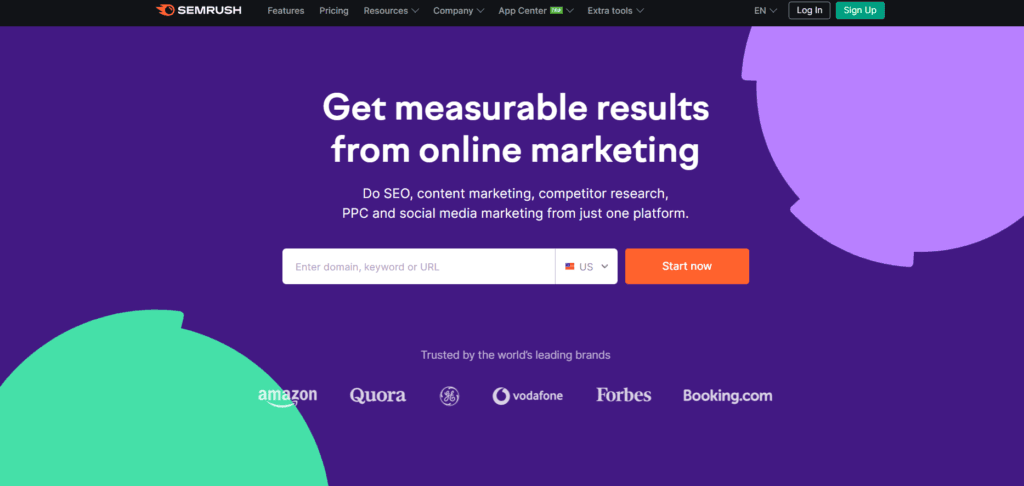
#2. SEMrush
SEMrush stands out as a comprehensive SEO tool with features that cater to multilingual SEO tracking.
Features include position tracking for different locations, organic research filtered by region, and backlink analysis by country.
Pricing: Plans start from $99.95 per month.
Pros and Cons
Pros: Comprehensive keyword and domain data for various regions and the ability to track competitor performance.
Cons: Its interface might be complex for newcomers.
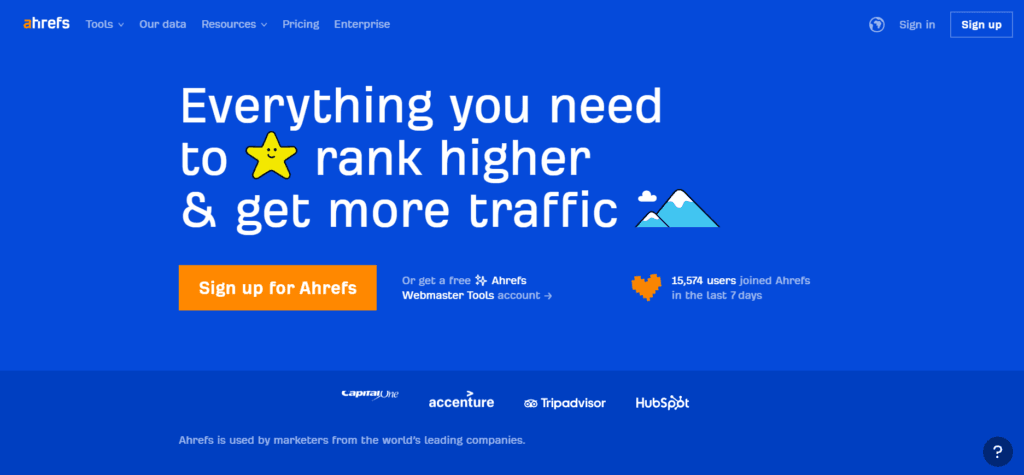
#3. Ahrefs
A mainstay in the SEO community, Ahrefs offers detailed backlink analysis, keyword research, and competitor benchmarking.
Its features also provide insights into the multilingual performance, like region-based keyword rankings and backlink origin analysis.
Pricing: Packages begin at $99 per month.
Pros and Cons
Pros: Accurate and vast link database and intuitive user interface.
Cons: No integration with Google Analytics.
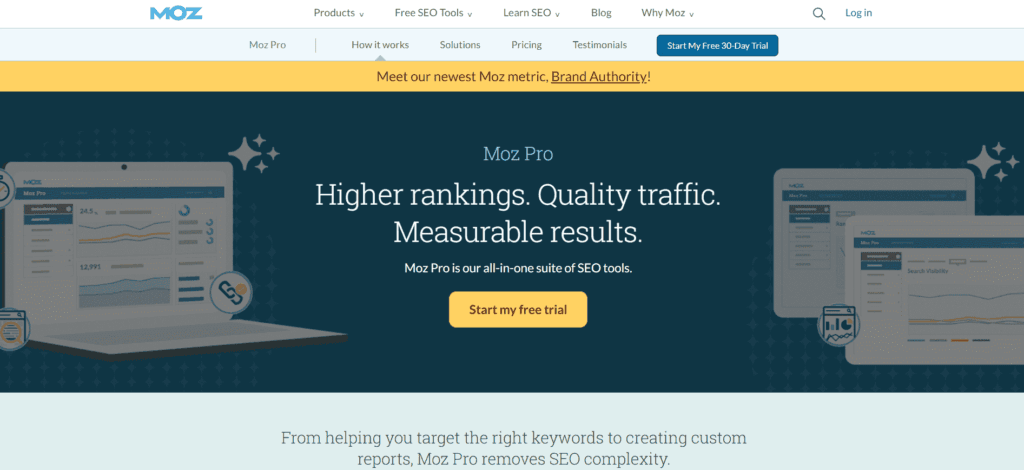
#4. Moz Pro
Moz Pro offers SEO solutions which include features geared toward tracking multilingual performance.
Features such as keyword ranking by region and domain authority comparisons across geographies are highlights.
Pricing: Plans start at $99 per month.
Pros and Cons
Pros: User-friendly interface, extensive SEO toolbox, and a supportive community.
Cons: Limited data for certain non-English speaking regions.
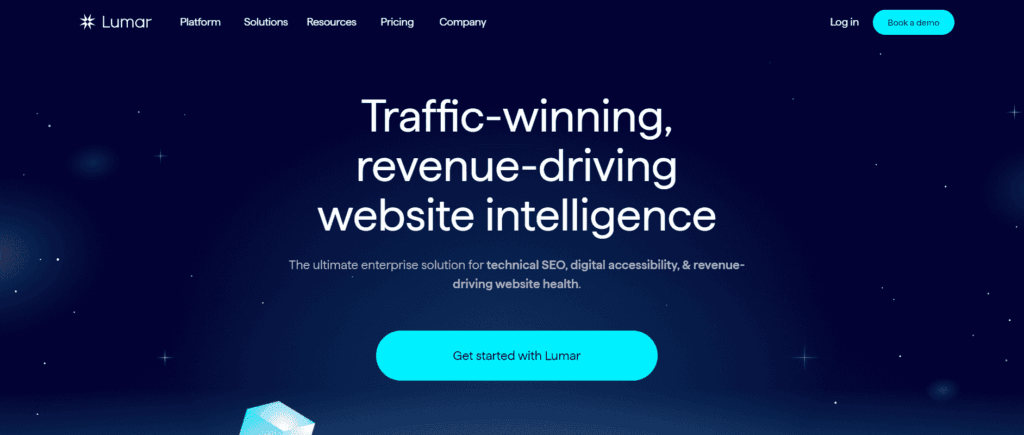
#5. DeepCrawl
DeepCrawl is tailored more towards the technical aspects of SEO, including site architecture and performance. It provides insights into how search engines navigate your multilingual sites, detecting potential hurdles.
Pricing: Custom pricing based on individual business needs.
Pros and Cons
Pros: Detailed crawl reports and integration with other SEO tools.
Cons: Might be too detailed for businesses just looking for surface-level insights.

#6. Botify
Specialized in large websites, Botify assists in understanding how search engines interact with multilingual sites. It includes segmentation of SEO performance by country and language.
Pricing: Tailored pricing based on website size and requirements.
Pros and Cons
Pros: Comprehensive SEO platform with a focus on technical aspects.
Cons: Steep learning curve for some users.
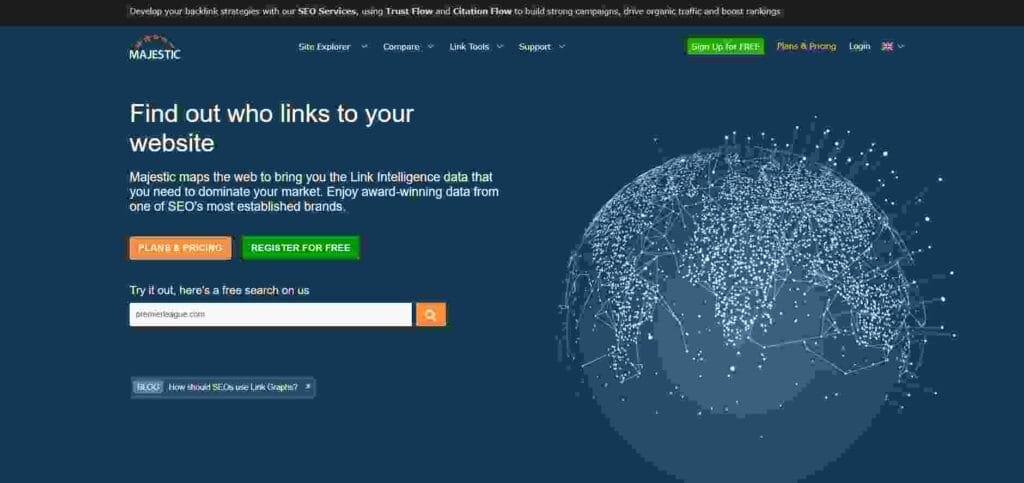
#7. Majestic
Majestic offers a suite of tools primarily focusing on backlink analysis. Its features can help businesses understand their link profile across different languages and regions.
Pricing: Packages start from $49.99 per month.
Pros and Cons
Pros: Extensive link intelligence database and visualization tools.
Cons: Lacks some of the broader SEO tools and features provided by competitors.
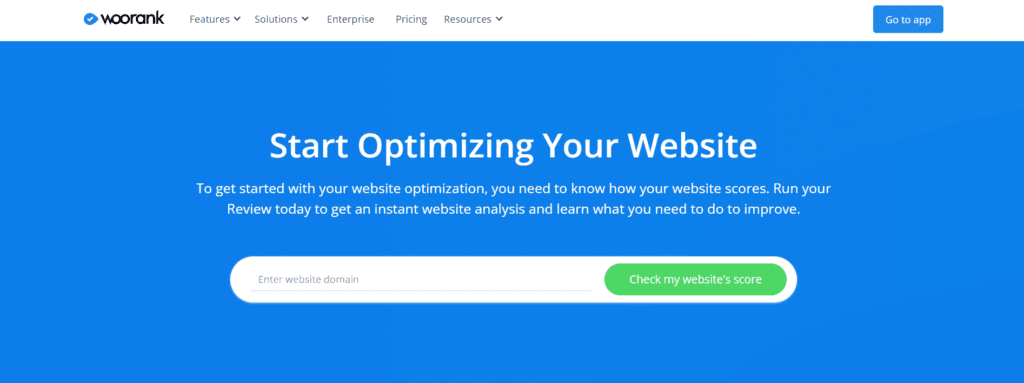
#8. WooRank
WooRank is an instant website review tool that provides an overall SEO score. Features: Localized keyword tracking, mobile local search, and competitor analysis across different geographies.
Pricing: Starting at $59.99 per month.
Pros and Cons
Pros: Intuitive interface and actionable insights. Cons: Might not offer the depth needed by larger enterprises.
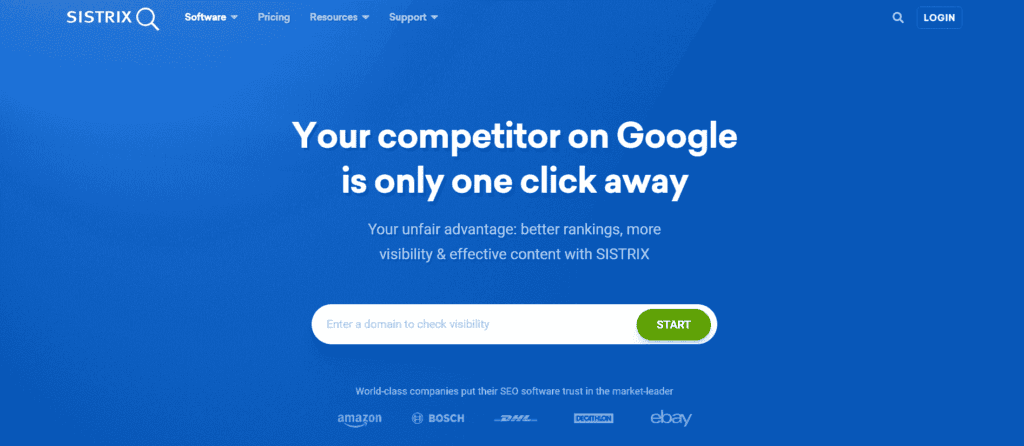
#9. SISTRIX
A versatile tool widely used in Europe, SISTRIX provides clarity over SEO activities, including multilingual performance. It offers visibility index by country, local keyword tracking, and region-specific competitor benchmarking.
Pricing: Modules priced at €100 each per month.
Pros and Cons
Pros: Modular pricing allowing businesses to choose what they need.
Cons: Might have a learning curve for some users.

#10. BrightEdge
BrightEdge offers an AI-driven SEO platform. It offers content recommendations based on different regions, keyword reporting by geography, and competitive benchmarking across countries.
Pricing: Custom pricing based on the company’s specific needs.
Pros and Cons
Pros: Advanced AI insights and integration with other marketing tools.
Cons: Requires training to fully utilize.
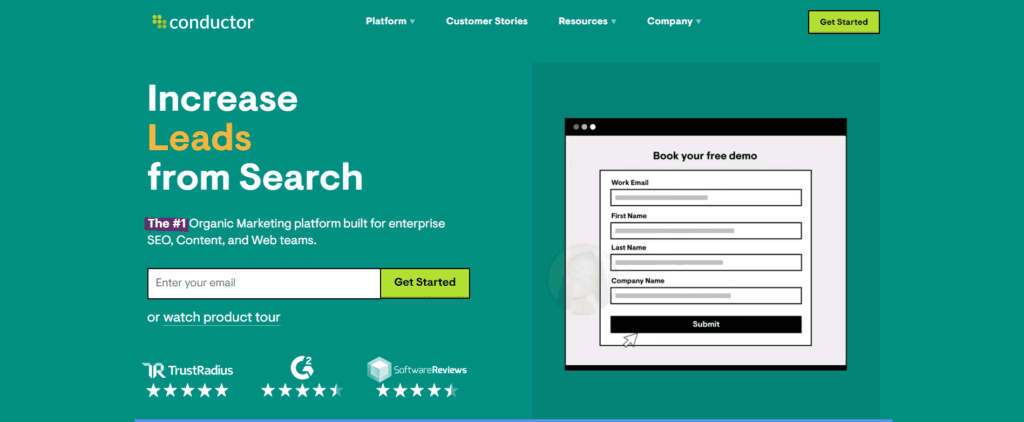
#11. Conductor
Conductor focuses on organic marketing and offers tools that can aid in tracking multilingual SEO. Features: Local keyword tracking, competitive analysis, and content recommendations for various regions.
Pricing: Customized based on user requirements.
Pros and Cons
Pros: User-friendly interface and a wide range of integrations.
Cons: Best suited for enterprise-level businesses, might be overkill for smaller entities.
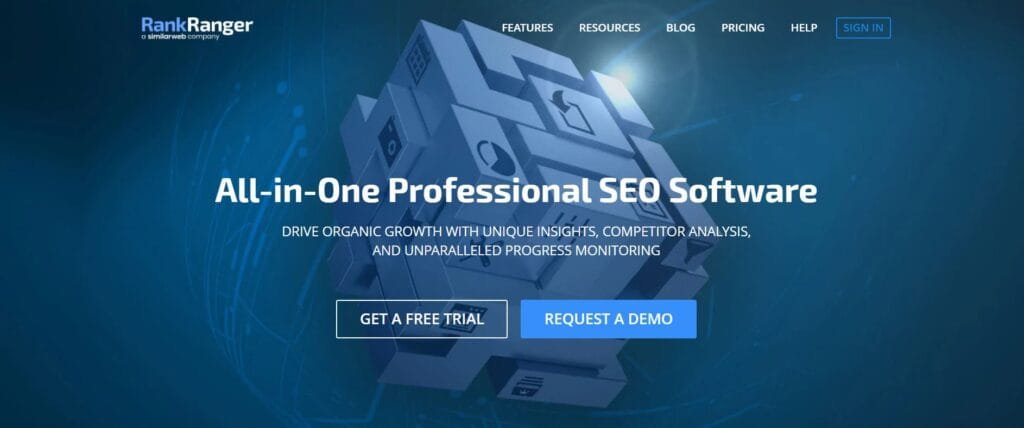
#12. RankRanger
RankRanger is an all-in-one SEO software platform. It offers multilingual keyword rank tracking, search engine market share by country, and local search analytics.
Pricing: Plans start at $69 per month.
Pros and Cons
Pros: Customizable dashboards and a wide range of integrations.
Cons: Interface might seem overwhelming to beginners.
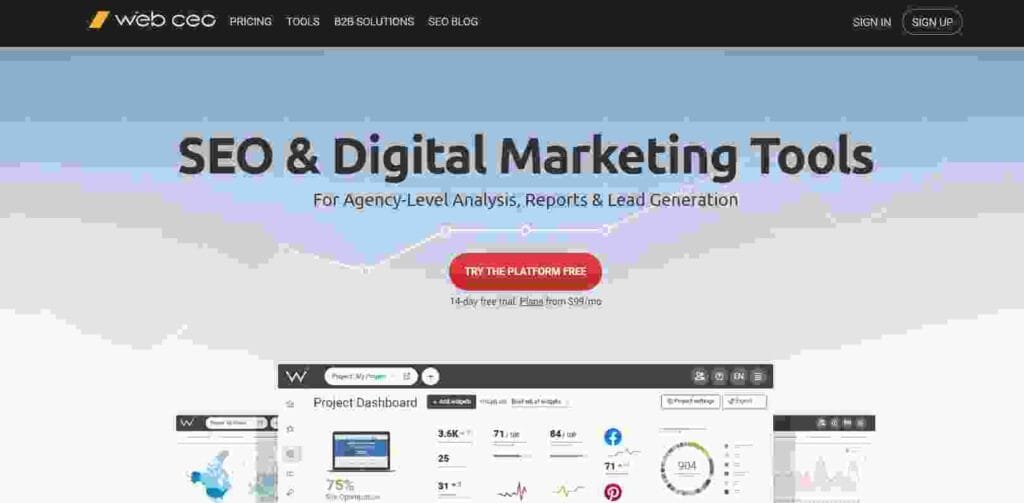
#13. WebCEO
WebCEO offers SEO tools that cater to businesses of all sizes. Features: Local rank tracking, competitor metrics by region, and multilingual keyword research.
Pricing: Plans begin at $39 per month.
Pros and Cons
Pros: User-friendly interface and collaborative tools for teams.
Cons: Depth might be lacking for very advanced SEO professionals.
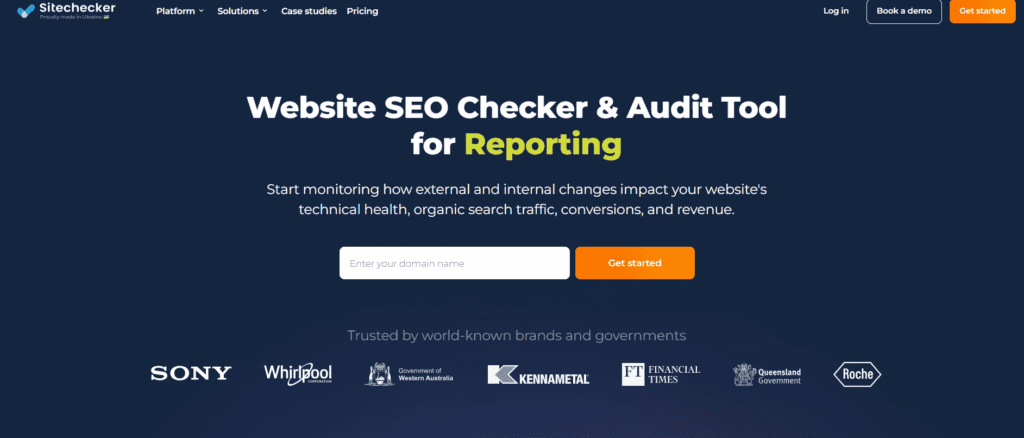
#14. Sitechecker.pro
Sitechecker.pro offers on-page SEO analysis, backlink monitoring, and website rank tracking as well as regional rank tracking, website health checks across different languages, and competitor performance by country.
Pricing: Starting from $29 per month.
Pros and Cons
Pros: Intuitive UI and actionable SEO insights.
Cons: More comprehensive tools might be needed for larger-scale businesses.
Setting KPIs and benchmarks for different geographies
Establishing clear Key Performance Indicators (KPIs) tailored to each region ensures that you’re measuring what truly matters. This might include organic search traffic, click-through rates (CTR) from search results, or conversions from specific countries.
Pros:
- Allows for focused strategy adjustments based on regional performance.
- Provides clarity on what success looks like for each market segment.
- Ensures alignment between SEO efforts and overarching business objectives.
Cons:
- KPIs need regular reviews and updates as business goals evolve.
- Can lead to an overwhelming amount of data if not appropriately streamlined.
Case Study: ‘Spotify’s Expansion Metrics’ – Gauging Success across Borders
When Spotify, the music streaming giant, started its expansion to new territories, it was essential to understand their performance in these regions. Instead of solely relying on global KPIs, Spotify developed region-specific KPIs that considered local listening habits, regional artists’ popularity, and local marketing campaigns.
This tailored approach allowed Spotify to identify that, in some Asian markets, users preferred playlists curated by local influencers over Spotify’s algorithmic playlists. Recognizing this preference, Spotify adjusted its strategy to focus on collaborations with local influencers, resulting in a significant boost in user engagement and subscriptions in these markets.
This case emphasizes the value of localized KPIs in driving strategy and the importance of agility in response to insights from data.
In summary, tracking and understanding multilingual SEO performance requires a combination of the right tools, clear KPIs tailored to each market, and the ability to adapt to insights from collected data. It’s this data-driven approach that ensures your efforts resonate with each local audience and contribute to the broader goals of your organization.
Wrapping it up
Multilingual SEO isn’t just about translation; it’s about resonating with diverse audiences on a cultural and technical level. By understanding cultural nuances, optimizing domain structures, and using advanced tools, businesses can effectively target multiple geographies.
As you embark on this journey, remember to stay adaptable, continuously learn from your data, and always prioritize your audience’s unique needs and preferences.
Read Next:
- Local SEO Strategies for Small Businesses: The Complete Guide
- Impact of Predictive Analytics on Sales Forecasting: A Deep Dive!
- How to Use ClickFunnels: An Explainer
- 15 Best Sales Acceleration Tools to Skyrocket Your Sales!
- 29 Best Keyword Research Tools: Pros, Cons, Pricing Analyzed!




















Comments are closed.